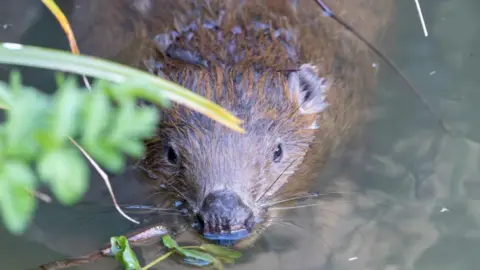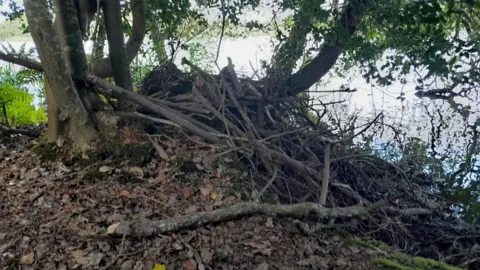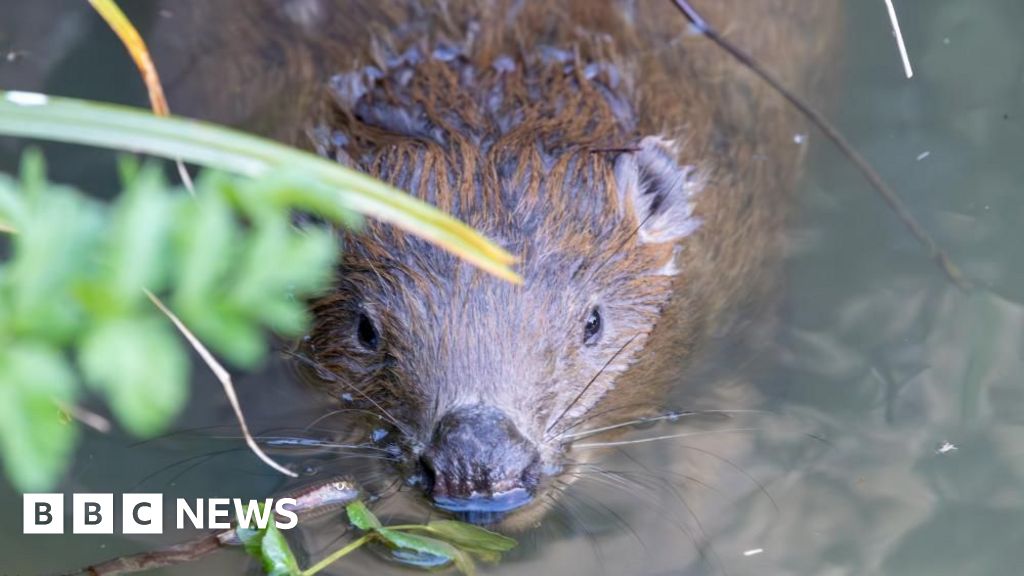Simon Ormiston
BBC News, South of England
 National Trust
National Trust
The beaver was discovered near the King George’s playing field in Swanage, Dorset.
A beaver, released into the wild by the National Trust, has been rescued from a stream near public toilets, several miles from its original home.
The National Trust was first alerted to news the beaver had been spotted in Swanage town centre in Dorset in May.
After setting up cameras and checking identification tags, staff were able to confirm the female was part of a project to establish a beaver population at Studland Nature Reserve.
National Trust project manager Gen Crisford said she was “surprised” to find the beaver so far from home and arranged for it to be returned to the reserve on safety grounds.
Dorset beaver dies five months after release
In March, a licence was granted for the first time in England to release two pairs of beavers into the wild at Little Sea.
Previous licences had only been granted for enclosures.
Beavers need areas of deep, fresh water but have been known to travel along the coast to look for new lodgings.
The National Trust believes the female swam about 5km (3 miles) around Old Harry Rocks on the Purbeck coast after leaving its lodge.
“We had considered that that was a route that was possible but we thought it was a bit too far,” Ms Crisford explained.
“Seeing one turn up in a stream in Swanage town was a big surprise.”
 NATIONAL TRUST
NATIONAL TRUST
Beavers create lodges that help slow the flow in rivers, reducing the risk of flooding and drought, according to the National Trust.
The animal created a new lodge by a toilet block at King George’s playing field.
It is a well known dog-walking area and as the stream is not particularly deep, the National Trust opted to return it to Studland over safety concerns.
Ms Crisford said: “We decided that on this particular occasion that it would be best for the animal and the project if we took her back and reintroduced her at the lake she was at in the beginning.”
Staff discovered a nick on the beaver’s tail and think it may have fled the original area after a fight with another beaver.
At least one of the family of beavers has had two new kits this year.
“They are very cute,” Ms Crisford said, encouraging members of the public to visit the bird hides in the reserve where the kits can be seen “bobbing like corks” in the water.

